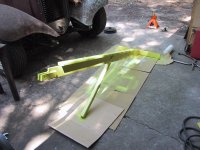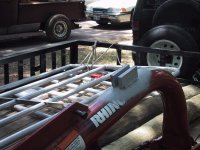Phantom309, I dig the holes by myself. I have not had too many problems keeping the holes vertical although there have been a few places where some formation of rocks has caused the hole to slant. I doubt that anyone could have prevented this. There is not much slop in my setup and I think that helps. I started out with a TSC PHD but it is too light duty to use where there are rocks of any size. I just kept breaking shear bolts when I got out of the bottom land. I bought the Rhino unit to replace it and have only used the Rhino on very rocky holes and so far have broken 2 shear pins vs 40-50 with the TSC unit. Now I have sell the TSC unit to someone who lives East of I35 where there are no rocks.
The old pickup is a '34/35 International C1. It is or I should say will be a resto-rod because I did not get the original running gear with it. I have a Chevy engine in it now but I plan to replace it with the one that is in my Vette and rebuild the original Vette engine when I get time.
The old pickup is a '34/35 International C1. It is or I should say will be a resto-rod because I did not get the original running gear with it. I have a Chevy engine in it now but I plan to replace it with the one that is in my Vette and rebuild the original Vette engine when I get time.

